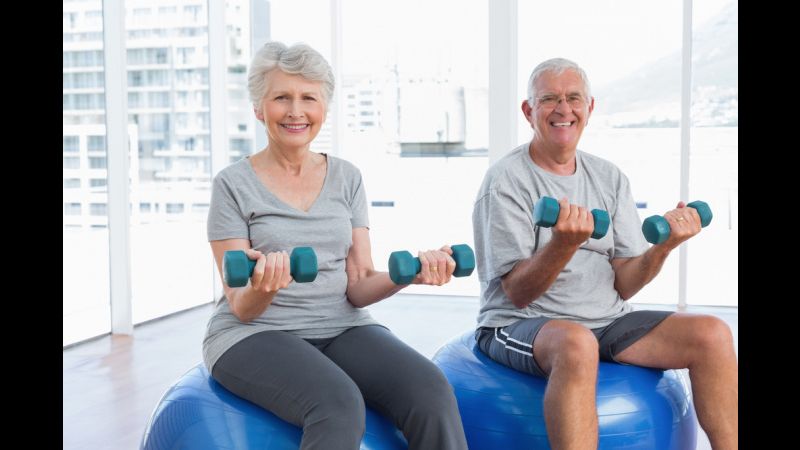We all know that our bodies lose muscle as our age increases, but did you know that doctors say this process can begin as early as when we are 25 years old? With that fact in mind, it is important to incorporate a daily exercise routine at any age. Weight training is a great way to not only strengthen muscles, but also improve one’s quality of life and reduce the risk of illnesses.
The Aging of Myocytes
A myocyte is simply a muscle cell. With age, it becomes more difficult for these cells to repair lost or damaged muscle fibers, leading to a significant decrease in one’s muscle mass. According to the Medical Director for the Mruk Family Education Center on Aging and the Fairlamb Senior Health Center Dr. David Lipschitz, we lose 50 percent of our peak muscle mass by the time we reach age 80.
With weak muscles come weak bones. Most people commonly, and correctly, associate weak bones with osteoporosis, but there are other health conditions that result from muscle loss.
One’s gait and balance are directly affected by a decrease in muscles, which leads to an increase in the probability of slips and falls. Another negative effect is a decrease in appetite, and as a result, essential minerals and vitamins are often missing from daily diets.
Strengthening Our Muscles
Age and inactivity are two of the most common reasons for this muscle loss, and although we cannot stop time, we can combat muscle loss with an active lifestyle. Using weights during exercise routines helps regain and increase both muscle and bone mass.
Researchers at the University of Michigan Physical Activity and Exercise Intervention Research Laboratory suggest that anyone 50 years or older should speak with their doctor before starting any weight training programs. It is best to begin with resistance exercises that use your own body weight, such as squats or modified push-ups.
Exercises like yoga, pilates and tai chi are also great for improving muscle mass among older adults. Other beneficial yet inexpensive training tools include resistance tubing and dumbbells.
To determine the proper weight to use, Dr. Lipschitz suggests that the exercised muscle should feel exhausted after repeating the exercise between eight to 10 times.
The Many Benefits
Along with strengthening one’s muscles and cognitive performance, exercising with weights can improve one’s quality of life. Not only has weight training been linked to living longer, but it can also improve one’s metabolism and mood. Since more energy is required, food intake increases as well.
Although falls can be common among seniors, Dr. Lipschitz estimates that an improved gait and balance leads to an 80 percent decrease in the risk for slips and falls, and by extension, bone fractures.
If you’re still not convinced, weight training is known to reduce the symptoms of back pain, heart disease, diabetes, arthritis and other chronic conditions according to Mayo Clinic.
Whatever weight training you choose to incorporate into your exercise routine, remember to listen to your body. Be sure to exercise at a comfortable pace and give your body time to rest.

